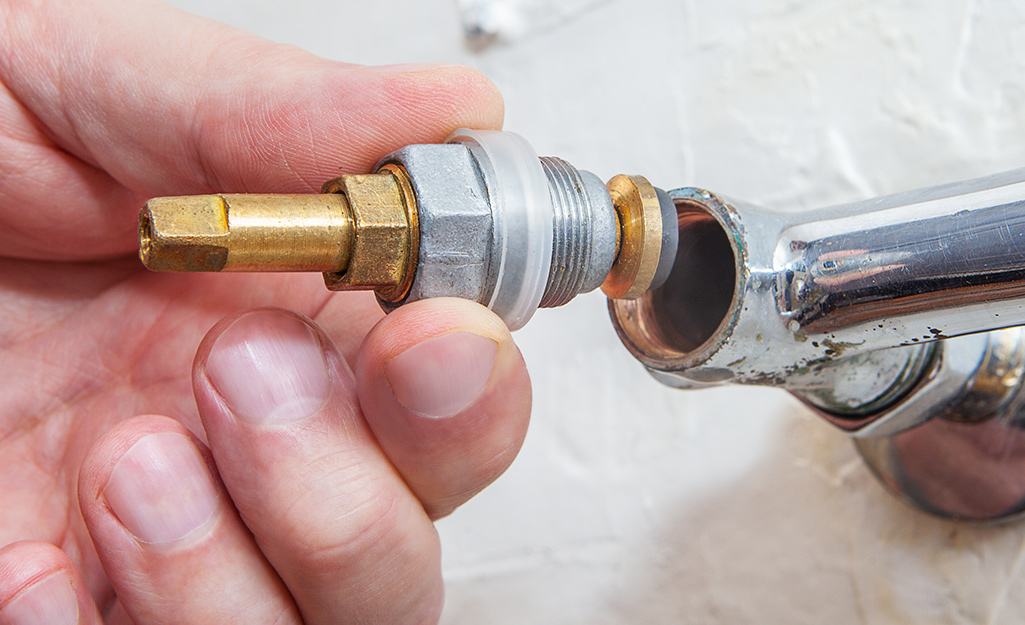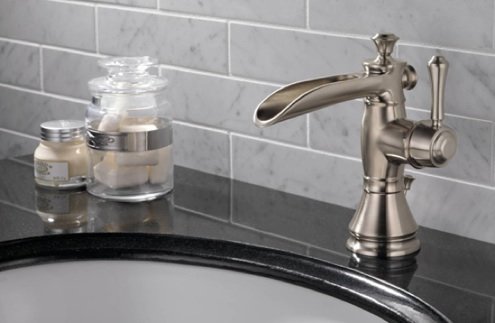What're your opinions regarding Why Is It Important To Fix Your Leaking Tap/Faucet??

Trickling taps could feel like a minor aggravation, however their impact surpasses just the aggravation of the noise. From drainage to incurring unneeded economic costs and wellness risks, disregarding a leaking tap can result in numerous effects. In this write-up, we'll explore why it's important to resolve this usual home problem immediately and properly.
Waste of Water
Environmental Influence
Leaking faucets add dramatically to water wastage. According to the Epa (EPA), a solitary tap trickling at one drip per secondly can throw away more than 3,000 gallons of water annually. This not only strains water resources however likewise impacts environments and wildlife depending on them.
Financial Expenses
Enhanced Water Expenses
Beyond the environmental effect, dripping taps can inflate water expenses significantly. The collected wastage gradually converts right into greater utility costs, which can have been stayed clear of with timely repair services.
Prospective Building Damage
Furthermore, prolonged dripping can bring about damage to fixtures and surface areas bordering the faucet. Water buildup can create staining, rust, and even architectural problems if left neglected, causing additional repair expenses.
Health and wellness Issues
Mold And Mildew and Mold Growth
The continuous existence of dampness from a dripping tap creates an optimal atmosphere for mold and mildew development. These fungis not just compromise indoor air top quality yet additionally present health risks, particularly for individuals with respiratory system problems or allergies.
Waterborne Illness
Stationary water in leaking faucets can become a breeding place for germs and various other microorganisms, increasing the danger of waterborne conditions. Pollutants such as Legionella bacteria grow in stagnant water, possibly resulting in serious ailments when ingested or inhaled.
Do it yourself vs. Professional Repair service
Pros and Cons of DIY Fixing
While some may attempt to take care of a trickling faucet themselves, DIY fixings come with their very own collection of challenges. Without proper understanding and tools, DIY attempts can intensify the problem or cause incomplete repair services, lengthening the trouble.
Benefits of Employing a Specialist Plumber
Working with a specialist plumber guarantees that the underlying cause of the leaking tap is attended to properly. Plumbing technicians possess the expertise and devices to detect and repair tap issues efficiently, saving time and reducing the risk of more damage.
Step-by-Step Guide to Fixing a Dripping Tap
Devices Needed
Before trying to fix a leaking tap, collect the required devices, consisting of a flexible wrench, screwdrivers, substitute components (such as washers or cartridges), and plumber's tape.
Typical Tap Issues and Their Solutions
Recognize the sort of tap and the specific problem causing the drip. Common troubles include damaged washers, corroded valve seats, or malfunctioning O-rings. Describe producer guidelines or online tutorials for detailed support on repair work.
Safety nets
Regular Upkeep Tips
To prevent trickling faucets, execute routine upkeep such as cleansing aerators, checking for leakages, and replacing worn-out components immediately. In addition, consider mounting water-saving tools or upgrading to much more effective components.
Significance of Prompt Repair Works
Resolving dripping faucets as soon as they're noticed avoids further water wastage and potential damage, eventually conserving both water and cash over time.
Impact on Building Value
Understanding of Well-Maintained Home
Keeping a property in good condition, including resolving maintenance problems like trickling faucets, boosts its perceived value and value among potential purchasers or lessees.
Influence on Resale Worth
Characteristics with properly maintained plumbing fixtures, including faucets, command higher resale worths in the real estate market. Attending to dripping taps can add to a positive impact during residential or commercial property inspections and negotiations.
Environmental Responsibility
Individual Payment to Preservation
Taking duty for taking care of trickling faucets straightens with more comprehensive efforts toward water preservation and ecological sustainability. Every person's actions collectively make a substantial effect on preserving precious sources.
Lasting Living Practices
By prioritizing prompt repairs and embracing water-saving routines, individuals add to sustainable living techniques that profit both present and future generations.
Final thought
Dealing with a dripping faucet goes beyond simple comfort; it's an important step toward preserving water, minimizing financial expenses, and protecting health and property. Whether via do it yourself repair services or specialist help, doing something about it to repair leaking taps is a little yet impactful means to advertise responsible stewardship of resources and contribute to a much healthier, much more lasting future.
Why Are My Faucets Dripping (And Can I Fix it Myself)?
Causes of a Dripping or Leaking Faucet
Whether you’re hearing drops of water falling and hitting a sink, or noticing water ooze out from the base of the spout, you shouldn’t ignore a dripping or leaking faucet. And, the good news is, sometimes you can fix the problem yourself.
In this article, we’ll review a few common causes of dripping and leaky. We’ll also walk you through some basic ways to find the problem and handle it without calling anyone — and let you know when to call in a pro.
But, no matter what the cause, or whether you can handle it on your own, the sooner you address it, the better.
Each drip may be a tiny amount of water. But, they all add up quickly. According to the U.S. Geological Survey, one faucet losing one drop every 20 seconds — five a minute — wastes around a liter of water every day, and 173 gallons a year.
Add in more than one in your house, and it’s a lot of water to waste. So, we’ll help you get to the bottom of things quickly.
Four Reasons Your Faucet May Be Dripping
Aerator is Damaged or Unseated Valve Seat is Corroded O Ring is Loose or Worn Out Part of the Assembly is Loose Aerator is Damaged or Unseated
If you unscrew the end of your faucet, you’ll find the aerator. It’s the little stem piece with a screen on it that shuts off the water circulation.
If it’s damaged, or if it’s not sitting right, it will allow water to pass through.
Valve Seat is Corroded
Next is the valve seat, which is connected to the washer. If the washer wasn’t in place correctly, then it could have ground against the seat. Over time, this damages the valve seat.
The problem could also be corrosion: Over time, the part has worn out, and it’s now allowing water to pass through.
O Ring is Loose or Worn Out
Since the o ring is only a small rubber gasket, it’s a common reason why the faucet is dripping. You’ll find it at the base of the faucet, and it’s there to keep water from coming out where it’s not supposed to.
However, it’s common for the o ring to wear out over time. When it does, you’ll notice a drip.
Part of the Assembly is Loose
So far, we’ve looked at a few small, specific parts. But, the problem could be anywhere in the assembly if something’s out of place.
Even if a part isn’t damaged, over time, it may have become loose or dislodged. It could be the parts we mentioned, or the aerator at the tip of the faucet, the stem itself,
Can I Fix a Leaky Faucet Myself?
Depending on the problem, and how handy you are, there’s a chance you can fix a leaky faucet without calling a professional. But, you do run the risk of making the problem worse.
If it’s a small drip, you can certainly try a few troubleshooting tactics. We’ll walk you through them in a moment.
But, no matter what, your first step should be shutting off the water coming into the faucet. You should find a shutoff valve under the sink on the pipes leading to it. Turn each one clockwise until they close tightly.
Next, make sure you have the right tools for whatever you’re attempting. It’s tempting to make do with what you have. But, you need the right ones for a reason: You’re often dealing with small parts that can break if you handle them carelessly.
If you’re feeling confident, here are some places to start.
Items Near the Tip of the Faucet
A few of the parts we mentioned — particularly the valve seat and washer — are located at the tip of the faucet where the water comes out. They’re easy to access, making it a good place to start.
Check the O Ring
To check the o ring, you’ll need to take off the spout at the base. It’s easiest on kitchen sinks with long spouts, versus the smaller, bulkier base on most bathroom sinks.
Either way, this can be tricky, so do it carefully and don’t force anything. If it’s not coming right off, you’re much better off calling in a pro than possibly breaking something.
For a kitchen sink, there’s usually a nut or coupling assembly at the base of the spout. These often slide off easily without using any tools.
Once you’ve disassembled those parts, gently but forcefully twist off the spout.
Then, you can see the o rings. There should be two of the rubber gaskets on the base. If they look worn or damaged, replace them, and see if that solves the problem.

As a reader about How to Fix a Dripping or Leaky Faucet , I thought sharing that excerpt was mandatory. Don't hesitate to take the opportunity to distribute this article if you appreciated it. We take joy in your readership.